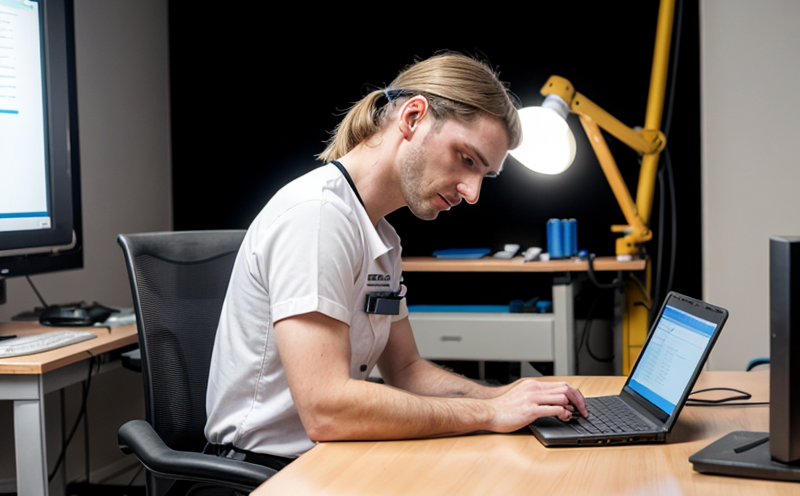SAE ARP 4101 Aircraft Seat Comfort Testing
The SAE ARP 4101 standard is a critical document in the aerospace and aviation industry. It provides guidance on the design, testing, and evaluation of aircraft seats to ensure they meet human factors and ergonomics standards. This service focuses specifically on the comfort aspects of aircraft seat design as per the requirements outlined in this SAE standard.
SAE ARP 4101 is part of a larger suite of documents that aim to enhance safety, comfort, and overall passenger experience within commercial aviation. The standard covers various aspects including the biomechanical properties of the seat structure, anthropometric considerations for different user groups, and the interaction between the occupant and the seat. This ensures that aircraft seats are not only comfortable but also safe and functional.
The testing process under SAE ARP 4101 involves multiple stages to evaluate the comfort of an aircraft seat. These include biomechanical loading tests which simulate real-world flight conditions, anthropometric fitting trials to ensure proper fit for all users, and subjective assessments by test subjects to gauge their perception of comfort.
Biomechanical loading tests are conducted using sophisticated instrumentation that measures forces and movements during simulated flights. This helps in understanding how the seat interacts with the occupant under different conditions such as takeoff, landing, and turbulence. The data collected from these tests is crucial for improving seat design to reduce strain on passengers' bodies.
Anthropometric fitting trials involve actual users sitting in the seats while their dimensions are measured against predefined specifications. This ensures that the seats can accommodate a wide range of body sizes comfortably. It also helps identify any potential issues with seating arrangements such as limited legroom or inadequate headrest height which could lead to discomfort.
Subjective assessments are conducted by trained individuals who evaluate various aspects of seat comfort including lumbar support, cushioning, and overall fitment. These evaluations provide qualitative feedback that complements the quantitative data obtained from biomechanical loading tests. By incorporating both objective measurements and subjective perceptions, we ensure a comprehensive evaluation of aircraft seat comfort.
The results of these tests are then analyzed to determine if they meet the criteria set forth by SAE ARP 4101. Compliance with this standard is essential for manufacturers aiming to produce high-quality aircraft seats that provide optimal comfort while maintaining safety standards.
Our laboratory adheres strictly to SAE ARP 4101 ensuring accurate and reliable testing results which are crucial for meeting certification requirements and gaining market acceptance. We use state-of-the-art equipment and methodologies to conduct these tests, providing our clients with detailed reports that outline the findings of each test conducted.
By focusing on human factors and ergonomics through SAE ARP 4101 aircraft seat comfort testing, we contribute significantly towards enhancing passenger experience in commercial aviation. Our rigorous approach ensures that every aspect of seat design is thoroughly evaluated to create comfortable seats that meet current industry standards.
Benefits
Complying with SAE ARP 4101 not only enhances the comfort and satisfaction of passengers but also has several other benefits for aircraft manufacturers:
- Maintains high passenger satisfaction levels ensuring customer loyalty.
- Avoids potential legal issues related to discomfort or injury during flights.
- Improves brand reputation by demonstrating commitment to quality and safety standards.
- Saves costs associated with re-designing seats that do not meet the required comfort criteria early in development stages.
- Facilitates smoother certification processes by providing robust data supporting compliance.
In summary, adhering to SAE ARP 4101 ensures that aircraft seats are designed and tested according to recognized industry best practices, leading to improved passenger experiences and safer, more efficient flights.
Industry Applications
- Commercial airlines seeking to improve seating comfort for passengers.
- Aircraft manufacturers looking to design compliant seats for certification purposes.
- R&D departments working on new aircraft models or enhancements to existing ones.
- Procurement teams evaluating suppliers based on their ability to deliver compliant products.
In these areas, SAE ARP 4101 plays a vital role in ensuring that all stakeholders involved in the aviation industry are aligned with international best practices for aircraft seat comfort testing.
Quality and Reliability Assurance
The importance of quality and reliability assurance cannot be overstated when it comes to aerospace products like aircraft seats. Here at our laboratory, we employ stringent quality control measures throughout the entire testing process:
- We use only certified equipment calibrated periodically to ensure accurate measurements.
- Data from each test is meticulously recorded and stored securely for future reference.
- Our team of experts conducts rigorous checks on all components involved in the tests ensuring no deviation from standards.
- Feedback loops are implemented post-testing allowing continuous improvement based on real-world performance data.
This commitment to excellence ensures that every seat tested meets or exceeds SAE ARP 4101 requirements, thereby upholding our reputation for delivering accurate and reliable testing results.





